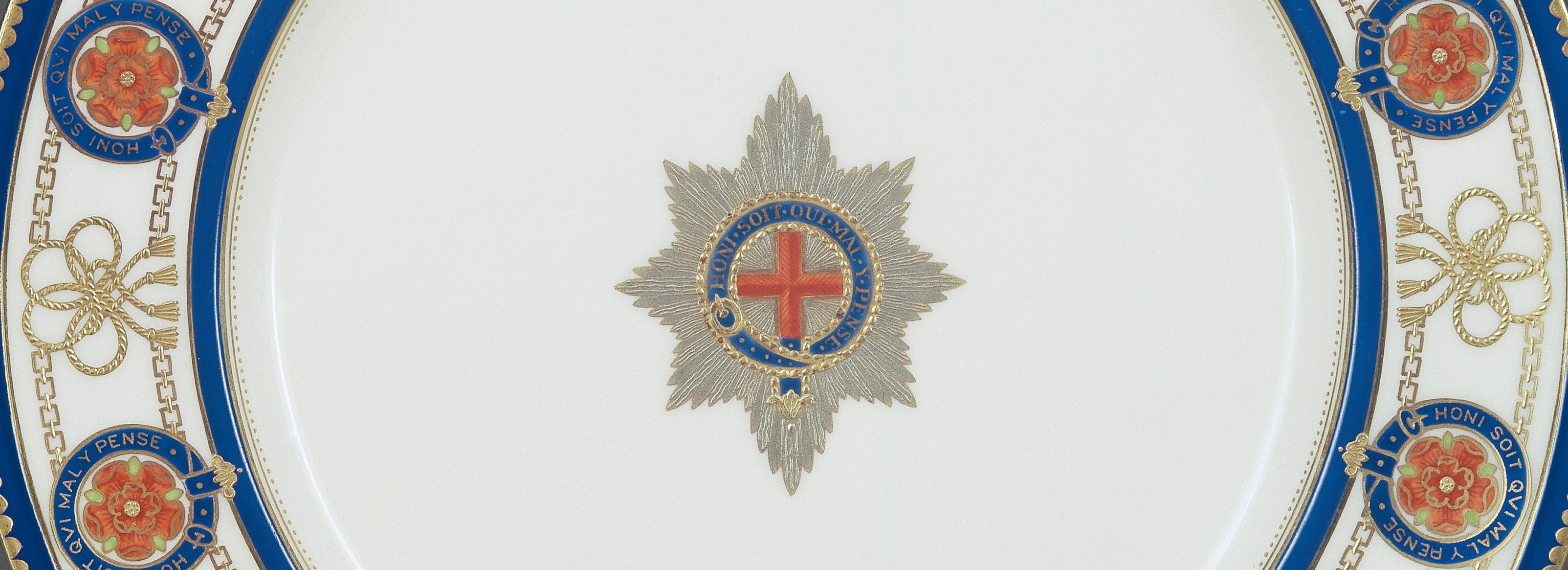
A Celebration of Platinum
Works of art in the Royal Collection that use the precious metal
Platinum and Ceramics
Some of the earliest uses of platinum in the Royal Collection are as part of particularly special finishes to ceramics. Two pairs of hard-paste porcelain vases (below) made by the French porcelain factory of Sèvres include both gold and platinum painted onto the deep black glaze. The lighter-toned platinum is particularly used to depict the figures, dogs and birds, with gold used for vegetation. Inspired by Asian lacquer, they were purchased by George IV when Prince Regent from the art dealer Robert Fogg in the early nineteenth century. The prince placed them in the Rose Satin Drawing Room at Carlton House, his London home on the Mall which was later demolished. They were then displayed at the Royal Pavilion, Brighton, and have been at Buckingham Palace since the 1850s.
A century after the Prince Regent acquired the Sèvres porcelain with platinum painted onto the glaze, his great grand nephew King George V commissioned the English porcelain factory of Minton to create a new dessert service in celebration of the Order of the Garter (below), the highest order of chivalry in Britain of which the monarch is Sovereign. Supplied by the retailers Thomas Goode & Co of London and date stamped June 1919 on the reverse, the dessert plates each feature a central Star of the Order of the Garter. The grey colour is platinum, fired onto the surface of the plate, in imitation of the silver used for a real Garter Badge. In combination with the rich reds, blues and gold of the rest of the plate, they would create a striking sight when the king dined with the Garter Knights.







